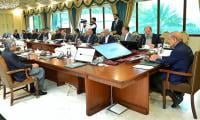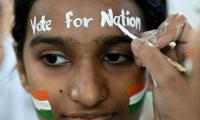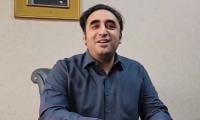A clip from CNN has become a source of great embarrassment for the entire country. In the clip, Richard Quest is asked first what he makes of the story from Pakistan (pertaining to a third of pilots not being qualified to be flying planes); and second, how prevalent this is elsewhere. Quest replies: “It is not. Let me say that clearly: it is not prevalent elsewhere. This is the most extraordinary story in aviation”.
The way events have unfolded in Pakistan is even more absurd. The people responsible for aviation safety and promoting our national carrier have behaved in a most irresponsible manner.
Let us begin with the release of the Preliminary Report by the Aircraft Accident Investigation Board (AAIB), which found inter alia (at paragraph 20(b) of the Report) that “the crew did not follow standard callouts and did not observe Crew Resource Management (CRM) aspects during most parts of flight”.
The report further provides that “the aircraft ended up higher than the required descend profile” (paragraph 20(d)); that “according to the Flight Data Recorder (FDR) and Cockpit Voice Recorder (CVR) recordings, several warnings and alerts such as over-speed, landing gear not down and ground proximity alerts were disregarded” (paragraph 20(i)); and that “Captain and First Officer were adequately qualified and experienced to undertake the said flight” (paragraph 20(m)).
So despite the fact that the preliminary report itself concludes that the captain and first officer on PK8303 were “adequately qualified and experienced to undertake the said flight”, shortly after this report was made public, a decision was made to ground one hundred and fifty of PIA’s pilots, after the country’s aviation minister declared that nearly a third of Pakistan’s pilots held ‘fake licences’.
One hundred and fifty pilots have been grounded without issuance of any show-cause notice and without opportunity of hearing, in clear violation of procedural requirements under the law. How can anyone believe that this report or subsequent action is some measure of accountability and reform?
What was the need for the rush and desperation to avoid due process requirements? After the PK8303 crash, there had been demands for accountability – from the CEO PIA, the minister for aviation and the secretary for aviation, with some asking for heads to roll. It seems that someone thought that throwing pilots under the bus was the appropriate way forward, not realizing that responsibility for adhering to aviation standards rests on them more so than on the pilots that are being demonized.
As far as PIA goes, one could ask the national air carrier why it was waiting for a plane to fall from the sky (for the nth time) to realize it needed to adhere to aviation standards.
Both the PIA administration and the government do not seem to understand the implications of their actions. Several questions arise. Ultimately, the responsibility for issuing licences is on the Pakistan Civil Aviation Authority (CAA). If one-third of our pilots have ‘fake licences’ (or dubious licences), which CAA officials will be held accountable for this? Over what period of time were these licenses issued and what officials have been identified as having been engaged in this illegal practice?
Further, what was the purpose of releasing pilots’ names without notifying them first officially? If the government had evidence of alleged wrongdoing, why have none of these pilots been issued show-cause notices and official notifications before being publicly named and shamed?
Clearly, no one in the corridors of power thought how this would play out in the international media, not just vis-a-vis the future of these pilots (whose reputations have been tarnished without evidence) but for Pakistan’s credibility as a country when it comes to aviation standards and safety.
Our aviation minister stated on the floor of parliament: “Things will become better with assessment and accountability”. What accountability has PIA ever been subject to? The lapses have been ongoing since 1956, when the C-47 Skytrain crashed near Rawalpindi. In fact, one year after this incident, another C-47 Skytrain “crashed after penetrating a thunderstorm and breaking up due to excessive forces placed upon the airframe”.
On 18 May 1959, a Vickers Viscount 815 skidded off the runway, resulting in a broken wing. On 14 August 1959, another Vickers Viscount 815 took off from Karachi for a training flight – what happened next sounds eerily familiar: “the trainee captain attempted a maneuver in disregard of the prescribed limitations of such maneuver. A two-engine overshoot was attempted at a very low height and below the prescribed minimum speed, when the aircraft was committed to a landing”.
On 26 March 1965, another Douglas C-47 Skytrain crashed near Lowari Pass near Dir, after departing from Peshawar Airport. Out of the twenty-six on board, twenty-two died. On 20 May 1965, PK-705 (a Boeing 820-040B) took off from Karachi Airport, with 125 on board: “The aircraft did not maintain adequate height for the circuit and continued to descend until it contacted the ground. The reason for that abnormal continuation of descent is unknown”; 119 people died.
On 8 October 1965, a Fokker F27 Friendship Mark 200 crashed after leaving for Skardu from Rawalpindi Airport. All four onboard died.
The point is clear though: neither PIA nor the CAA have ever been held accountable or been motivated enough to change their ways. Before the government destroys the careers of pilots who are overworked, underpaid and always scapegoated, these people need to ask themselves: can Pakistan’s international image handle what you are putting it through?
Paragraph 2 of the report explains the composition of the investigation team. One could question what commercial or airbus experience most of the members had.
How many planes must fall from the sky before those guilty are held accountable for their negligence, incompetence and corruption? Will the real culprits be held responsible for such levels of institutional failures? And who will be held responsible for the damage and humiliation inflicted upon Pakistan internationally as a result of all this?
The writer is founding partner of Mazari-Hazir Advocates & Legal Consultants.
Email: imaanmazarihazir@ gmail.com
A woman walks past a building of the International Monetary Fund. — AFP/FileThe annual and spring meetings of the...
Late Benazir Bhutto's daughter Asifa Bhutto Zardari addresses the Christian community in Bihar Colony on January 23,...
Representational image. — PexelsWater is an important scarce natural resource that is required for several everyday...
Pakistani employees of online marketplace company Kaymu at work in Karachi. — AFP/FileThe true spirit of development...
India uses Afghanistan as a backstage area to carry out terrorist attacks against Pakistan
Another report by the Pakistan Institute of Peace Studies states that 78 per cent of attacks have been carried out by...







